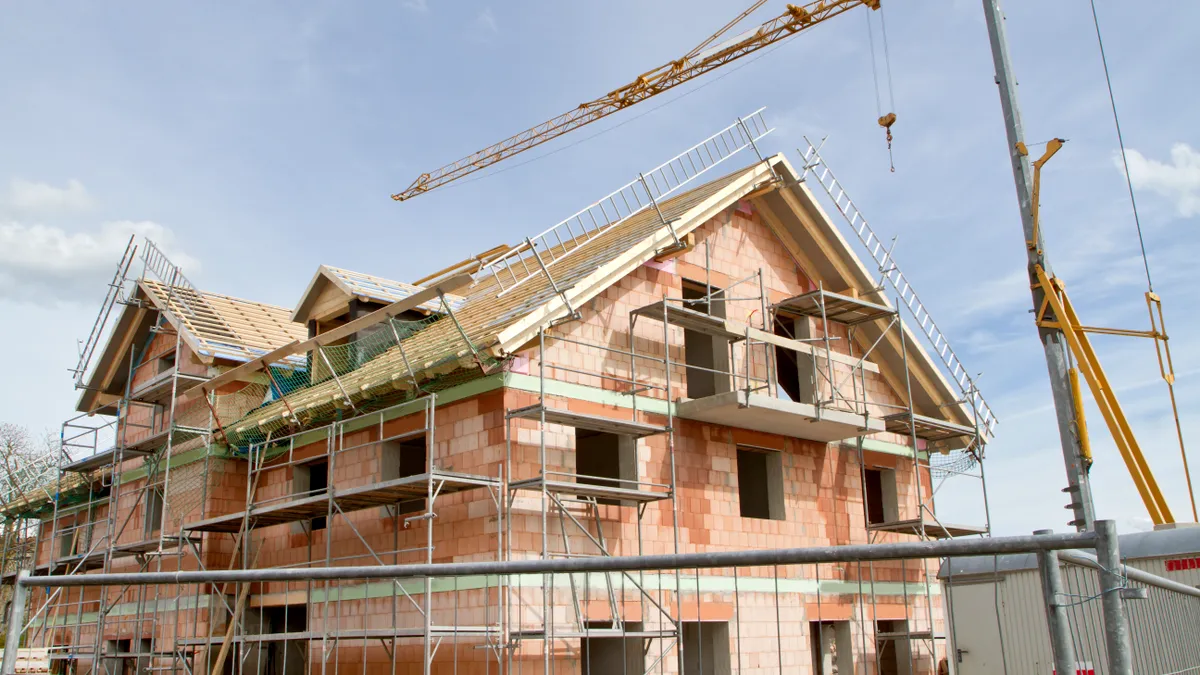Dive Brief:
- Construction spending increased 0.7% in December from a revised November figure of $1.245 trillion to a seasonally adjusted annual rate of $1.253 trillion, the U.S. Census Bureau. This represents the fifth-straight month of spending increases and a record spending high this year, according to MarketWatch.
- The 0.7% rise, according to a Reuters report published in CNBC, beat analyst estimates by 0.3%, as both private and public construction performed well during the last month of 2017. A robust job market, low interest rates and post-natural disaster building all contributed to the month's strong spending report, MarketWatch reported.
- On a year-over-year basis, 2017 construction spending increased 3.8% to $1.23 trillion, the smallest increase in six years, Bloomberg reported. A lag in power and manufacturing construction projects contributed to a slow 0.6% increase in private nonresidential construction. Public spending decreased 2.5% while residential spending increased 10.6%.
Dive Insight:
Industry stakeholders are still waiting to hear details on President Donald Trump's now-$1.5 trillion infrastructure plan. The plan has strong potential to boost public construction spending, though the federal government might take a back seat to private investors and local agencies when it comes to financial contributions.
Typically, the federal government funds a significant portion of local infrastructure and transportation projects through grants or other means. But if leaked documents surrounding what appears to be an infrastructure plan outline prove authentic, that dynamic will shift. According to the draft, public agencies that wish to initiate major projects must come up with 80% of the financing in order to qualify for 20% from the federal government.
This change could force state and local governments to look more closely at public-private partnership (P3) arrangements that may allow them to benefit from the private side's access to capital and its ability to maintain and operate the asset after project completion.
This policy could also leave some projects in the lurch — at least those that haven't secured a federal commitment on funding — among them, the $13 billion New York-New Jersey Hudson River rail tunnel.
Part of the $24 billion Amtrak Gateway initiative, the tunnel's equipment was severely damaged by saltwater during Superstorm Sandy, and crews have been making piecemeal repairs since then. Officials from the Gateway Program Development Corporation, which oversees the project, said the Obama administration agreed to pay for half of the tunnel replacement costs, but the Trump administration might choose not to honor that commitment.














